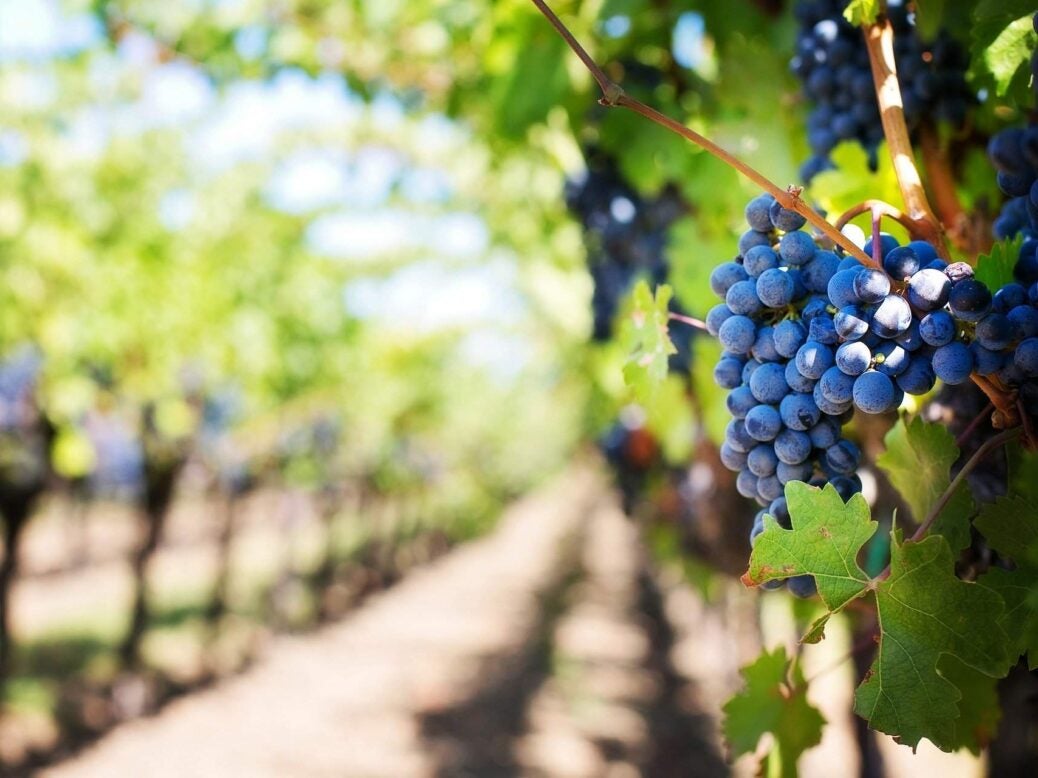
One of the many attractions of Burgundy is the option of going along and exploring where all its fine wine is made, writes Jonathan Ray
Chateau de Pommard five minutes’ drive from the heart of Beaune, is a glorious spot. The largest monopole in all Burgundy, the estate comprises two handsome châteaux (Marey-Monge and Micault) surrounded by 20 hectares of prime Pinot Noir-growing soil, enclosed by an ancient stone wall.
First planted in 1726, Château de Pommard has been owned since 2014 by a wine-mad couple who have revolutionised the property: Michael Baum, a Silicon Valley entrepreneur, and his wife Julie Carabello. The estate has been farmed organically and biodynamically since 2016 and the first officially certified organic vintage will be available in 2022.
Château Micault is also being renovated, ready to turn into a fancy hotel, and the stables are being rebuilt to make way for tasting rooms, a restaurant and a Wine & Spirit Education Trust-accredited wine school.
Unlike Bordeaux, where many leading estates are in foreign hands, Burgundy is unused to such major foreign investment and it’s fair to say the Carabello-Baums have shaken things up a bit, determined as they are to make their estate the centre of Burgundian wine tourism.
The nearby town of Beaune is, of course, the wine capital of Burgundy, most famous for its annual Hospices de Beaune wine auction. It’s a delightful place to visit and a great place to base oneself as you potter about the Côte de Beaune, visiting such fabled, wine-list-familiar villages and communes as Pommard, Volnay, Meursault, Puligny-Montrachet, Chassagne-Montrachet and Santenay.
But, as the Carabello-Baums have discovered, it’s a sleepy spot and, unlike Bordeaux with its grand, fancy-dan châteaux, crunchy gravel drives and vast, neat-as-a-pin vineyards, the average vineyard holding in Burgundy is a meagre eight hectares (Château de Pommard is a rarity both in terms of size and grandeur) – and if you pitch up at a particular producer to taste or buy some wines, he or she will very likely have just come in from the vineyard and you will have to wait as they take off their muddy gumboots, wash their hands and go in search of clean glasses. Compared to Bordeaux, Burgundy is delightfully homespun.
Beaune is a tenth the size of the city of Bordeaux and you can walk around its quaint streets of half-timbered houses in no time. Base yourself at the Hotel de la Poste and take a circular tour along the old city ramparts. Make a point of visiting the Maison des Climats, a tiny museum that explains beautifully the topography of Burgundy, and don’t miss the mighty Hospices. Then head to Place Carnot for a bit of bar-hopping.
You will eat well – my top tips are Le Bistrot du Bord de l’Eau, La Lune and La Buissonnière – and several producers have tasting rooms in town where you can buy by the bottle or have wine sent to the UK by the case. As I write, the 2018 Burgundy vintage with its fresh, juicy reds and plump generous whites is creating a buzz, and I can’t think of anything nicer than heading to Beaune and tasting the wines in situ.
Three of the best Burgundies
2015 Domaine Jean Chartron Bourgogne Blanc Clos de la Combe £19.25; Private Cellar
This is a Puligny-Montrachet in all but name and a fraction the price. Organically produced, it’s full of peach and grapefruit notes underlined by fine acidity and blessed with a long, creamy finish.
2017 Château de Pommard Clos Marey-Mange Monopole £132; Château de Pommard
A stunning red burgundy that’s carefully blended from all seven plots in the enclosed Château de Pommard vineyard, full of sweet, ripe red and dark fruit backed by a long, savoury finish.
2016 Joseph Drouhin Beaune Clos des Mouches, 1er Cru £170; Berry Bros & Rudd
Veronique Drouhin is a famously gifted winemaker and this exquisite wine is both delicately scented and robustly flavoured, with a tantalising mix of dark fruit and earthy mushroom.
Read more
‘English fizz has become hip’ – Jonathan Ray on the English wine renaissance
Jonathan Ray on Rioja: ‘The quality level has soared recently’
Jonathan Ray: Why a good Riesling is hard to beat









